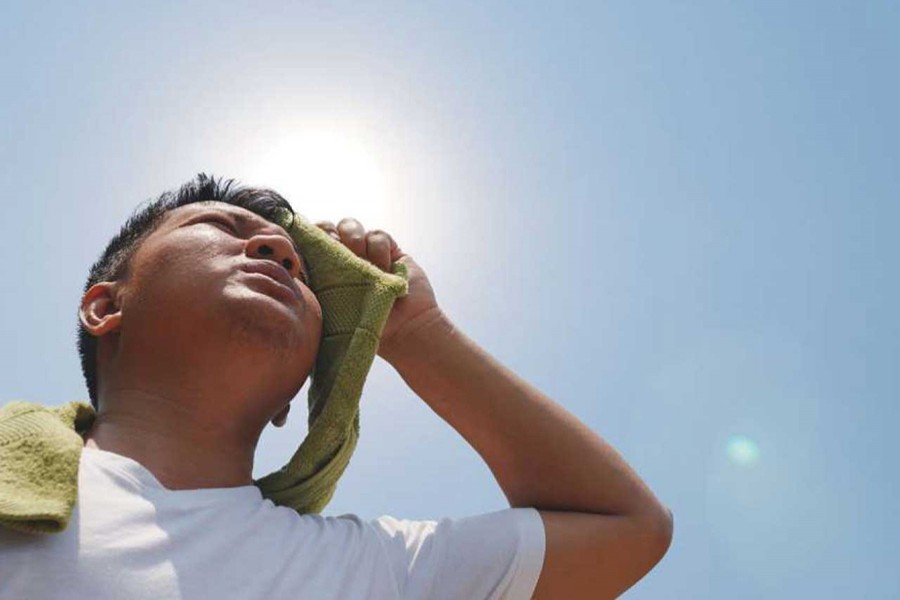
Published :
Updated :

As the temperature keeps rising, there is an increasing risk of many heat-related illnesses. One of the common illnesses is heatstroke.
During the holy month of Ramadan, people who fast all day long in this scorching heat, become vulnerable to heatstroke.
But what is heatstroke? There is a special centre in our brain which regulates the core body temperature of about 37 degrees Celsius (98.6 degrees Fahrenheit). When the environment is too hot, our bodies release excess heat by sweating and radiating it through the skin.
But in certain situations, like extreme high temperature, high humidity or strenuous activity under a burning sun, the mechanism to keep body temperature within normal limit may fail. As a result, the core temperature rises. When the core temperature is more than 40 degrees Celsius (104 degrees Fahrenheit), heatstroke occurs.
There are basically two types of heatstroke. One is the result of excessive physical activity, known as exertional heatstroke. It is common during hot humid conditions and develops quickly within a few hours.
Non-exertional heatstroke is related to age or underlying diseases; this happens more slowly over several days.
Heatstroke can happen to anyone. But there are some groups who are more likely to succumb to it. Infants and the elderly over 65 years are at high risk.
Athletes, soldiers, and people with occupations that require physical labour in hot environments are also susceptible. Some medications, e.g. beta-blockers, antidepressants, and antipsychotic also increase the risk.
Common symptoms of heatstroke include fainting, headache, dizziness, altered mental state such as confusion, agitation, seizures etc. Fatigue, seizures, dry skin, high or low blood pressure etc. can also be seen.
In extreme cases, people may slip into a coma. Heatstroke can also cause brain damage, organ failure or death in severe cases.
Whenever someone suffers from heatstroke, he or she must immediately be moved to a shaded area. A call for help should be sent to the emergency services. In the meantime, some first aid measures need to be taken. These include placing the patient in a lying position with feet slightly elevated, applying cold water, ice packs to the groin and armpits and keeping a fan running close to the individual.
We should be very cautious to prevent heatstroke. We should avoid strenuous exertion in hot humid conditions. If it cannot be avoided, then exertion should be scheduled during slightly cooler parts of the day, e.g., morning or evening. This should also be interspersed with frequent rests and drinking plenty of water. Intake of caffeinated drinks and soda should be restricted.
If it is not absolutely necessary to go out, it is better to stay indoors when the sun is hot. When going out in the sun, using sunscreen and umbrella, wearing hats and sunglasses can offer good protection.
Dress choice is also important. Lightweight, tightly woven, loose-fitting clothing in light colours is advisable.
Heatstroke is not uncommon in our country. A lot of people suffer from it during summer. It is therefore imperative that we stay aware of the preventive steps and first-aid measures for heatstroke.
Between 10 and 65 per cent of people with non-exertional heatstroke die from the illness. The situation is better for exertional heatstroke, which has a mortality rate of 3 to 5 per cent. Some people experience permanent organ damage or neurological dysfunction.
Hence, heatstroke should be dealt with seriousness and proper awareness.
Dr Imtiaz Ahmed completed his MBBS from Dhaka Medical College.


 For all latest news, follow The Financial Express Google News channel.
For all latest news, follow The Financial Express Google News channel.